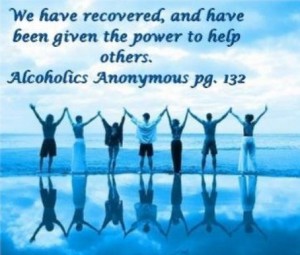Perhaps you have heard about it by now? There’s a movement spreading across the country when it comes to ministry settings: becoming trauma-informed. The topic concerns churches that are interested in missional engagement with the culture because there is a growing body of evidence that suggests that if we can break the cycle of adversity in childhood we can help everyone experience “life to the full” as Jesus intended (John 10:10).
In the first post in the series, I focused only the first identifier of a trauma-informed ministry: the realization of the widespread impact of trauma and potential paths for recovery. In my second post, I started a conversation regarding how Jesus recognized the signs and symptoms of trauma in those he not only interacted with, but then became followers themselves of his life and teachings. That post got a little long, so I ended up splitting that conversation into two parts!
For those that may land on this article as their starting point, I’ll reiterate the full context the larger definition of “trauma-informed” practices, and trust that if the discussion is intriguing and engaging enough the reader will go back and visit the previous discourse. According to the Substance Abuse and Mental Health Services Administration (SAMHSA), the concept of a trauma-informed approach would mean that “a program, organization, or system that is trauma-informed:
- Realizes the widespread impact of trauma and understands potential paths for recovery;
- Recognizes the signs and symptoms of trauma in clients, families, staff, and others involved with the system;
- Responds by fully integrating knowledge about trauma into policies, procedures, and practices; and
- Seeks to actively resist re-traumatization.”
A trauma-informed approach to ministry starts with the realization of the widespread impact of trauma and then extends to practices that are shaped by the realization that this trauma is reflected in all sorts of signs and symptoms that might have been overlooked or simply categorized as bad or erratic behavior, maybe even a flaw of character!
Jesus knew the tremendous brokenness of the world, and he knew the power of the Kingdom of Heaven to address the needs of people traumatized by the evil of this world and the effect of sin. Jesus had an amazing ability to see past the symptoms and see the individual… while still not ignoring the need or the trauma which had caused the symptoms in the first place!
In “Was Jesus’ ministry trauma-informed, part 2,” we looked at Nicodemus’ interaction with Jesus in John, chapter 3. In this continuation of that discussion, we’ll now compare and contrast that interaction with the one Jesus has with the Samaritan woman at the well in John’s gospel, chapter 4.
One necessary note before looking again at the interaction between two people, Jesus and the Samaritan woman: the social environment of the time made it VERY unlikely that a Jewish man would have anything at all to do with a Samaritan woman. The social, religious, and ethnic barriers between the two parties represented in this interaction would be difficult for us to replicate. So, with that in mind, here are a few observations:
- Jesus initiates the discussion and takes the first step in bridging the wide social, ethnic, and religious divide between them.
- The woman is taken aback, and incredulously… asking basically, “Aren’t you breaking your own rules to ask me for a drink?”
- Jesus, like with Nicodemus, has no real interest in focusing on the physical realities of this chance encounter. He would much rather speak of Spiritual matters. He brings up her need to ask him for a drink of “living water.”
- Like Nicodemus, the Samaritan woman seems unable at first to take in the significance of what Jesus is saying. So, like Nicodemus, her response sounds defensive. She points to Jesus’ lack of an instrument to retrieve water. She points to her own ethnic heritage (a daughter of Jacob) and the connection to the physical well they stood over. She challenges Jesus’ authority and importance.
- Jesus side steps the woman’s defensiveness and offers a gift, eternal life. An end to any spiritual thirst.
- The woman responds positively, seeing a way out of her personal need and lack. She asks for what Jesus is offering.
- Jesus asks her to go and get her husband, to which she replies that she has no husband. Jesus then points out that she is right in this statement, but that is because she is merely living with the man without being wed, and that five previous times she has been married (and, presumably, divorced).
- Jesus asks the woman to believe in her, having established his credibility, and gives her an opportunity to respond by focusing on spiritual realities and a future hope that can start for her as soon as she decides (“a new time is coming. In fact, it is already here…” in verse 23).
- The Samaritan woman believes in Jesus, gets a “new start,” and becomes a powerful messenger. Many believe in Jesus because of her words, and many more believe because they accept her invitation to come listen to him and hear for themselves (verses 39-42).
What can be gleaned from this interaction? Was Jesus’ conversation with the Samaritan woman “trauma-informed?” Would being trauma-informed as a ministry mean you could no longer identify sin and suggest righteousness (righteousness = living in right relationship with God through obedience and discipleship) as a means of spiritual, emotional, and relational healing?
Clearly, Jesus’ initiative in reaching out and expressing a need that the Samaritan woman might meet was counter-cultural. I happen to believe it was also trauma-informed. The woman clearly was living on the fringes of an already marginalized people group… she came alone to the well in the heat of the day, either avoiding the women who would come at the start of the day or unwelcome in their midst. Her defensiveness, like Nicodemus’ response in the previous chapter (John 3), suggests that she is used to being on her on with little or no support system or advocacy on her behalf by others. Jesus’ speaking to her and asking her for a drink suggests to her that her marginalization is NOT going to be an issue for him. He sees her value, even if she does not.
Furthermore, while some might see some pointedness and crudeness in the way Jesus “reveals” her shortcomings—“you are right to say you have no husband… in fact you have had five husbands”—I see a willingness by Jesus to address a symptom of her trauma, identify it in a factual but nonjudgmental way, and then get on to more weighty matters. I think the evidence of this tone if in how the woman responds. Had there been judgment or condemnation in Jesus’ voice, I doubt the conversation would have continued, let alone the response that the woman has: to go and tell all of those in the village that she has found the Messiah!
Often those that have been most deeply wounded and ostracized can be the best agents of healing and reconciliation in a community. Jesus saw this trauma-informed aspect of ministry, and rather than using her as a means for his glory, leaving her at the well as he parades into town, he sends her forth to be the bearer of good news… God is near! The Messiah has come! Written off by many of her peers, Jesus writes her in to the story of  Sychar’s eternal destiny, placing her in a prominent role: “Many of the Samaritans from the town of Sychar believed in Jesus. They believed because of what the woman had said about him” (John 4:39).
Sychar’s eternal destiny, placing her in a prominent role: “Many of the Samaritans from the town of Sychar believed in Jesus. They believed because of what the woman had said about him” (John 4:39).
I believe in the ministry maxim: broken people are best reached by other broken people. In Alcoholics Anonymous, it’s the former drunk that sponsors the newly initiated in the program, not the teetotaler who has never had a sip! Those convinced of their sin will steer clear of the self-righteous. Those who have experienced trauma themselves have a tremendous gift in reaching others working through the effects of their traumatization. Indeed: broken people are best reached by broken people. But here’s the amazing thing, whether those in our ministries realize it or not: we are all broken. And, we minister most powerfully out of the areas of our brokenness, not our perceived strengths. As the Apostle Paul wrote:
“Give praise to the God and Father of our Lord Jesus Christ! He is the Father who gives tender love. All comfort comes from him. He comforts us in all our troubles. Now we can comfort others when they are troubled” (2 Cor. 1:3-4, NIrV).
“God said to me, ‘My grace is all you need. My power is strongest when you are weak.’ So I am very happy to brag about how weak I am. Then Christ’s power can rest on me’” (2 Cor. 12:9, NIrV).
I absolutely believe Jesus’ ministry was “trauma-informed!” But, in seeing those affected by trauma, beaten down and harassed by the weight of the adversity in their lives, he didn’t see the trauma… he saw them. Each and every one of them as individuals worthy of a place in God’s Kingdom. As our ministries gain in skills and ability to recognize the symptoms and effects of trauma and childhood adversity, we must be careful not to make anyone a “project” or merely the focus of our charity. This was NOT Jesus’ approach… the Samaritan woman didn’t need to “work through her issues” before being commissioned as a minister of the gospel! Jesus needed her specifically because she did have “issues!” Amazing… and how like the love and grace of God to take our imperfections and use them for his perfect purpose.
I hope you’ll continue with me on this exploration of trauma-informed principles as they apply to the ministry of Jesus! Next stop on this journey together will be to look at how Jesus responds to those systems and structures he sees perpetuating trauma, and how he sought to integrate a new way of thinking—dare we say a “trauma-informed way” of thinking—into our religious and spiritual structures!

 Click here to subscribe to our RSS feed with your favorite email client and be alerted to new articles.
Click here to subscribe to our RSS feed with your favorite email client and be alerted to new articles.